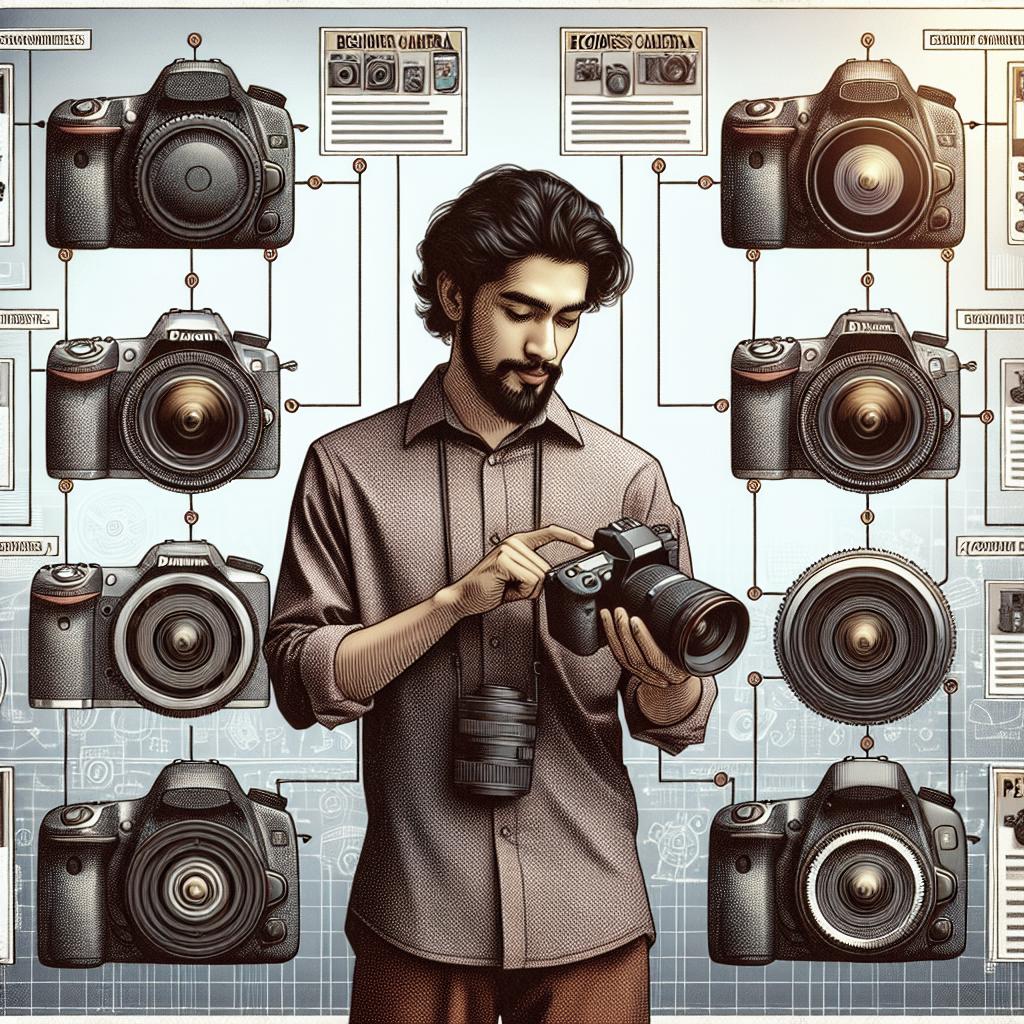“`html
How to Take Stunning Black and White Photos
Black and white photography is an art form in itself, transcending the limitations of color to showcase the raw beauty, emotion, and dramatic contrasts inherent in a scene. This guide will equip you with the knowledge to master this craft. We’ll delve into the essential techniques needed to train your eye, leverage monochrome vision, enhance details, and effectively utilize lighting for black and white photography. Through these tips, you’ll learn how to focus on textures, contrast, and the interplay of light and shadow, which are crucial in creating impactful and stunning monochrome images. Additionally, we’ll debunk some common misconceptions about contrast and teach you to pay close attention to lighting nuances. Whether you’re a seasoned photographer or just starting, these insights will elevate your black and white photography to new artistic heights.
Start training your eye from the get-go
Before you even pick up your camera, it’s vital to train your eye to spot the potential for a great black and white photo. This involves recognizing scenes that have strong shapes, patterns, and textures, as these elements tend to stand out more in monochrome. Practice by observing how light interacts with objects, casting shadows and highlighting textures that might not be as visible in color.
Additionally, focus on contrast—the juxtaposition of light and dark within a scene. A well-contrasted photo directs the viewer’s attention to the key elements. Train yourself by converting a few color photos to black and white in post-production and analyze which types of scenes look more compelling. The more you practice, the easier it becomes to naturally identify potential monochrome subjects.
Monochrome vision (your secret weapon)
Monochrome vision is about seeing the world in shades of grey, isolating the essence of composition without the distraction of color. Start by setting your camera to a black and white mode if it has one, allowing you to preview scenes without color. This can be incredibly useful in helping you to visualize your final image as you compose the shot.
It’s crucial to understand the tonal range in your scenes. Consider the emotional power inherent in shades of grey—from the soft, muted tones that can evoke a sense of calm, to the bold, high-contrast shots that can inspire intensity. Experiment with various scenarios to master how different scenes translate into black and white, augmenting your ability to foresee the final outcome.
Next level details
Black and white photography amplifies details that might be skimmed over in color photos. Textures, lines, and patterns become the stars of the composition. Pay close attention to these details when choosing your subject matter. Look for intricate textures in nature, urban architecture, or portraits that tell a story through every wrinkle and crease.
Furthermore, give due importance to the depth of field. A well-executed shallow depth of field in black and white photography can add an ethereal, dream-like quality to your images. Conversely, a deeper focus can enhance textures and bring every detail into sharp clarity—use the latter in scenes with rich and complex visual elements.
The secret where we take back that first secret
While the initial advice is to focus on contrast and details, an intriguing twist is to sometimes allow subtlety and softness to take center stage. The delicate interplay of various grey tones can create a nuanced, harmonious image that invites deeper introspection. Not every black and white photo must scream with distinction; sometimes, whispering a mood is more effective.
Consider using this to express depth or emotion in your photography. Fine, gradual transitions in tonal ranges can create depth and mood, drawing viewers into the frame. This approach might defy the overarching principle of contrast but can be a potent tool in the right photographic context, crafting an intimate yet compelling visual narrative.
More contrast isn’t always what’s best
The instinct may be to crank up contrast for dramatic effect, yet sometimes this can diminish rather than enhance a photo’s impact. It’s essential to strike a balance between contrast and detail, especially as excessive contrast can wash out mid-tones, losing the subtleties that add depth and character to a photo.
When editing, pay attention to maintaining a full range of tones—from the brightest highlights to the darkest shadows, including everything in between. This ensures that even the most subtle of details are not lost, preserving the complexity and richness of your image. Aim for harmony in your tonal range and let the innate beauty of your subjects be the focal point.
Lighting will make or break your photographs (so pay close attention)
Lighting is one of the critical components of black and white photography. The way light and shadow interact can greatly influence the mood and tone of your image. Soft, diffused lighting might create calming, serene images, while harsher lighting conditions can add a dynamic edge through stark contrasts.
Utilizing natural light, be it the golden hour or the rays filtering through clouds, allows for a more organic photo. Experiment with artificial lighting indoors to control and shape the shadows and highlights precisely as desired. Understanding and manipulating light will drastically enhance the compelling nature of your black and white photographs.
Focus on the lightest white and the darkest black
One effective technique in creating striking black and white images is to focus on capturing the purest whites and the richest blacks in your composition. Find elements in your scene that naturally possess these qualities and frame them as focal points in your image.
This approach serves to anchor the viewer’s eye, establishing a dynamic balance within the photo’s structure. It helps in showcasing the full spectrum of monochrome possibilities by highlighting the extremes, which in turn allows the subtler grey scales to fill the narrative with depth and emotion.
Related posts:
- Exploring the World of Street Photography
- Mastering Portrait Photography: A Guide for Beginners
- The Art of Landscape Photography: Tips and Tricks
Final thoughts
Mastering black and white photography requires a nuanced understanding of light, contrast, and composition. By honing these skills and training your eye to see beyond color, you can unveil the inherent beauty of monochrome images. Experimentation, practice, and a keen attention to detail will help you capture stunning black and white photos that evoke emotions and tell compelling stories.
| Aspect | Key Points |
|---|---|
| Training the Eye | Focus on shapes, patterns, textures, and contrast. |
| Monochrome Vision | Visualize scenes in shades of grey to understand tonal range. |
| Details and Texture | Highlight intricate details, use depth of field creatively. |
| Subtlety in Tone | Use soft tonal transitions for mood and depth. |
| Contrast Balance | Avoid excessive contrast; maintain a full range of tones. |
| Lighting | Experiment with natural and artificial light to shape your image. |
| Focus on Extremes | Capture the lightest whites and the darkest blacks for impact. |
“` This code includes the suggested content in a structured format with appropriate HTML tags, enhancing readability and ensuring the blog post remains engaging and informative.


